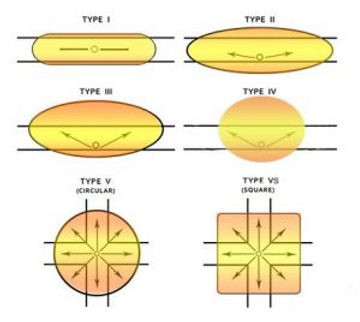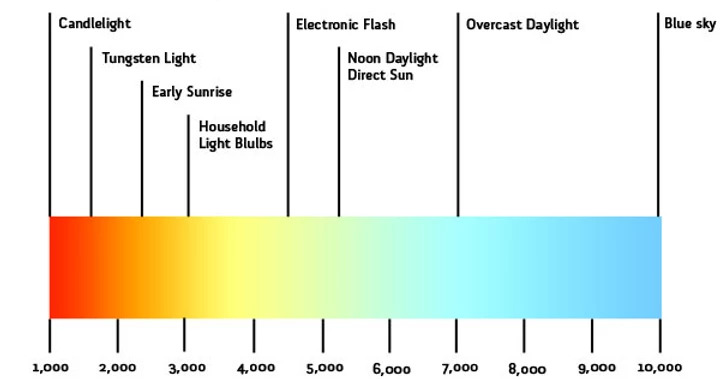A Guide to Exterior LED Retrofits
Have you considered upgrading your lighting but got lost in the technical jargon? Did you get overwhelmed with all the options? Don’t worry – we’ve got you covered. We’ve created this simple guide that breaks down commercial exterior LED retrofits into five key elements to help you choose the best solution for your facility.
- Wattage
- Lumens
- Lens Type
- Life Hours
- Color Temperature
With this guide, improving your energy efficiency will be a piece of cake. LEDs are brighter, longer lasting, and a quick fix that shows immediate results. Since metal halide fixtures are the most common type of exterior lighting, we will focus mostly on retrofitting from metal halide to LED.
1. Wattage
Because LEDs (Light Emitting Diodes) are much more efficient, a lower wattage can be used to achieve similar lighting output when compared to the old fixtures. The reduction in energy usage can be as large as 75% or as little as 30%. Finding the right LED wattage to fit the application does not solely depend on the existing wattage, but it sets a good benchmark to start looking for the right fixture. A general rule of thumb to follow is a 3 to 1 ratio of metal halide wattage to LED wattage.
Calculating the wattage of a metal halide fixture should also factor in the wattage of the ballast as well as the lamp or bulb. There are many tools out there to help find the total wattage of a metal halide fixture to find a suitable LED fixture replacement. One good table to use is shown below.
Metal Halide Lamp Wattages
For example, when replacing a 32W metal halide lamp, make sure to account for the ballast wattage (6W) for a total fixture wattage of 38W. Therefore, when looking for an LED replacement, you will need to find an equivalent fixture for a 38W metal halide.
2. Lumens
The lumens of a fixture plays the largest role in a LED retrofit. The lumens note the light output of a fixture and determines the amount of illumination that the fixture provides. LED fixtures are more efficient than metal halide or high-pressure sodium fixtures – resulting in more lumens for less wattage. Most LED fixtures average around 150 lumens per watt while metal halide or high-pressure sodium fixtures average around 80 lumens per watt.
Lumens are split into two distinct types called scotopic and photopic lumens. Scotopic lumens are light that can be seen with the naked eye while photopic lumens are light that cannot be seen by the naked eye. High-Intensity fixtures like metal halide and high-pressure sodium fixtures are comprised of more photopic lumens than LED fixtures. The difference in these types of lumens affect the way the human eye sees light and the same object may look different depending on the light source. In order to compare various lighting technologies, scientists came up with a correction factor to provide a standard lumen measure which allows for an easier method of evaluating light fixtures.
Because of this, the lumen output of an LED fixture may not be a perfect match to the old fixture you are replacing. However, your replacement should produce at least 85% of the lumens your existing fixture produces to get a similar light output.
3. Lens Type
All fixtures distribute their light in separate ways depending on their lens type. Most fixtures fall into five categories of lenses, ranging from Type 1 to Type 5, which determine the way the light output is displayed on a surface. The lower lens types cast more light to the left and right instead of forward and back and a Type 5 lens is a perfect circular distribution around the fixture. The most common lens types you will see on exterior LED fixtures are Type 3 and Type 4, which cast light suitable for roadways, parking lots, and walkways.
Light Lens Distribution Types
Each lens type is more suitable to certain applications, which are outlined below:
- Type 1: smaller pathways and sidewalks
- Type 2: wide walkways, ramps and entrance roadways, smaller side streets or jogging paths
- Type 3: larger area of lighting like roadways and general parking areas
- Type 4: sides of buildings and walls to illuminate perimeter of parking areas and businesses
- Type 5: center islands, intersections, large commercial parking lot
These applications are meant to be a general suggestion and not an absolute list. Be sure to communicate with the fixture supplier and note the availability of each lens for the fixture that you find.
4. Life Hours
LED fixtures are most famous for their efficiency, but they are also known for their longevity. Compared to HID (High-Intensity Discharge) bulbs and fixtures, LEDs can last anywhere from 3 to 5 times longer – usually lasting about 50,000 hours of operation. Metal halide bulbs, on the other hand, last for around 10,000 hours of operation. If your lights are running 12 hours a day for 365 days a year, an LED will last for a little over 11 years compared to just over 2 years for a metal halide.
Additionally, replacing these bulbs and fixtures is not as easy as changing the light bulbs in your house. The associated costs of switching out an exterior fixture can include lift rental, time, and labor to replace the bulb, along with the cost of the bulb itself. These expenses can build up very quickly with metal halide fixtures. Most LED fixtures are also covered under a 5-year warranty, thus eliminating your maintenance costs in the first five years.
5. Fixture Color Temperature
Ever wonder why different bulbs and fixtures shine all kinds of colors? The color of a light is dependent on the materials used in that specific bulb technology and is measured on a color temperature spectrum. The foundation of the spectrum comes from the color that a piece of steel shines when brought to specific temperatures, measured in Kelvin.
Light Color Temperature Spectrum
Most exterior fixtures used in parking lots, roadway, and walkway lighting have color temperatures ranging from 3000K to 5700K. A temperature like 3000K provides light that is slightly yellow-orange while a temperature like 5700K provides a blue-white light. Fixtures with higher color temperature provide slightly brighter illumination than the lower color temperature fixtures and are ideal for exterior applications.
Improved energy efficiency isn’t impossible and initiating an exterior LED retrofit doesn’t have to be a complicated ordeal. By following this guide to identify the fixture wattage, lumen output, lens type, operational hours, and color temperature you will be ready for a retrofit in no time. This information will help you choose the perfect fixture for every application and result in high-quality lighting with significant energy savings.
If you decide that you would rather have help during this process, Colite Technologies can certainly assist with that as well. Contact one of our team members and we will curate a turn-key custom retrofit plan for your facility from start to finish.



